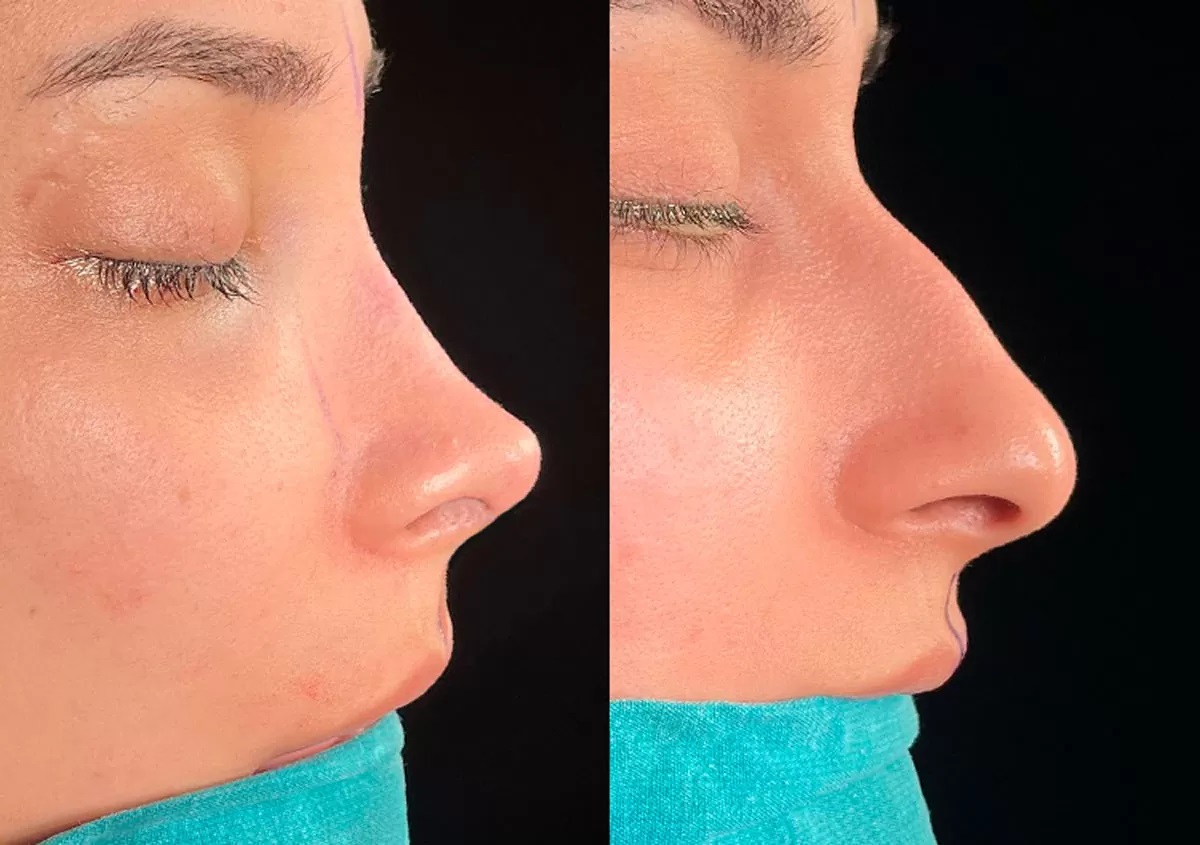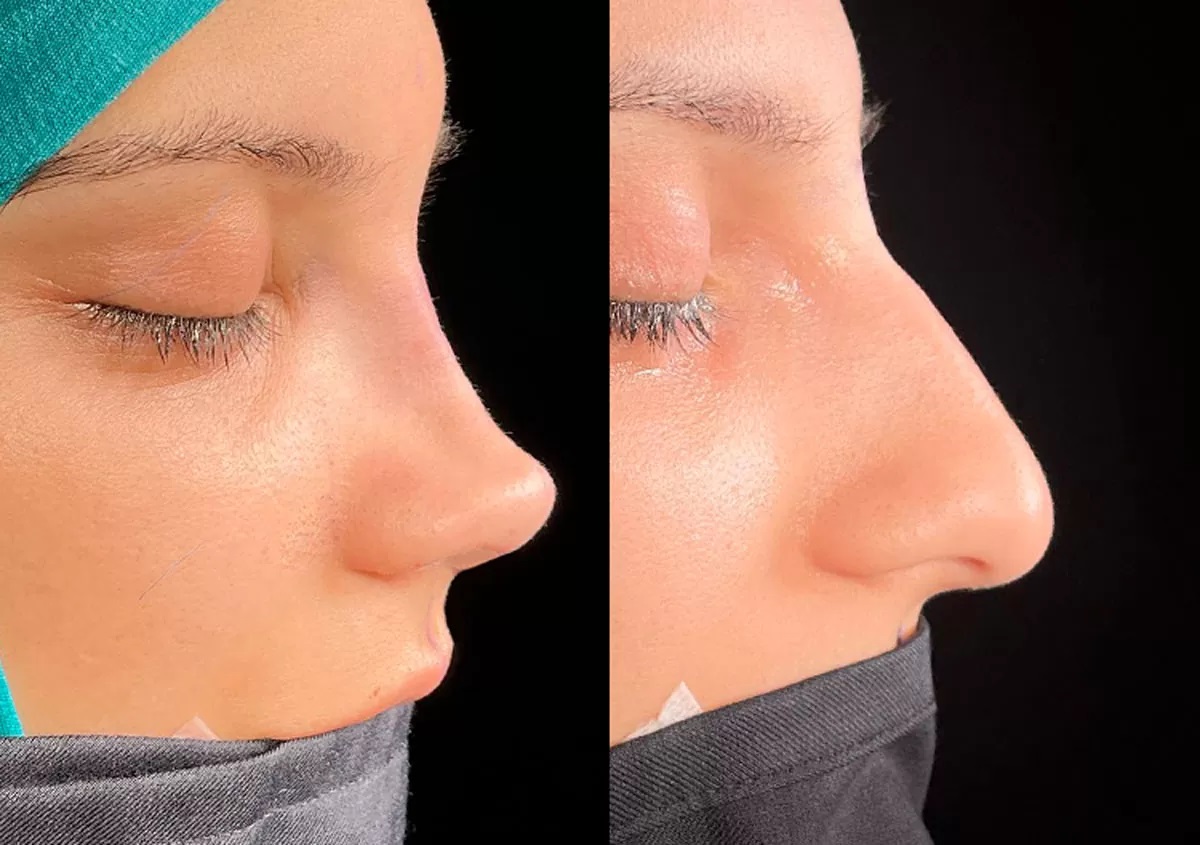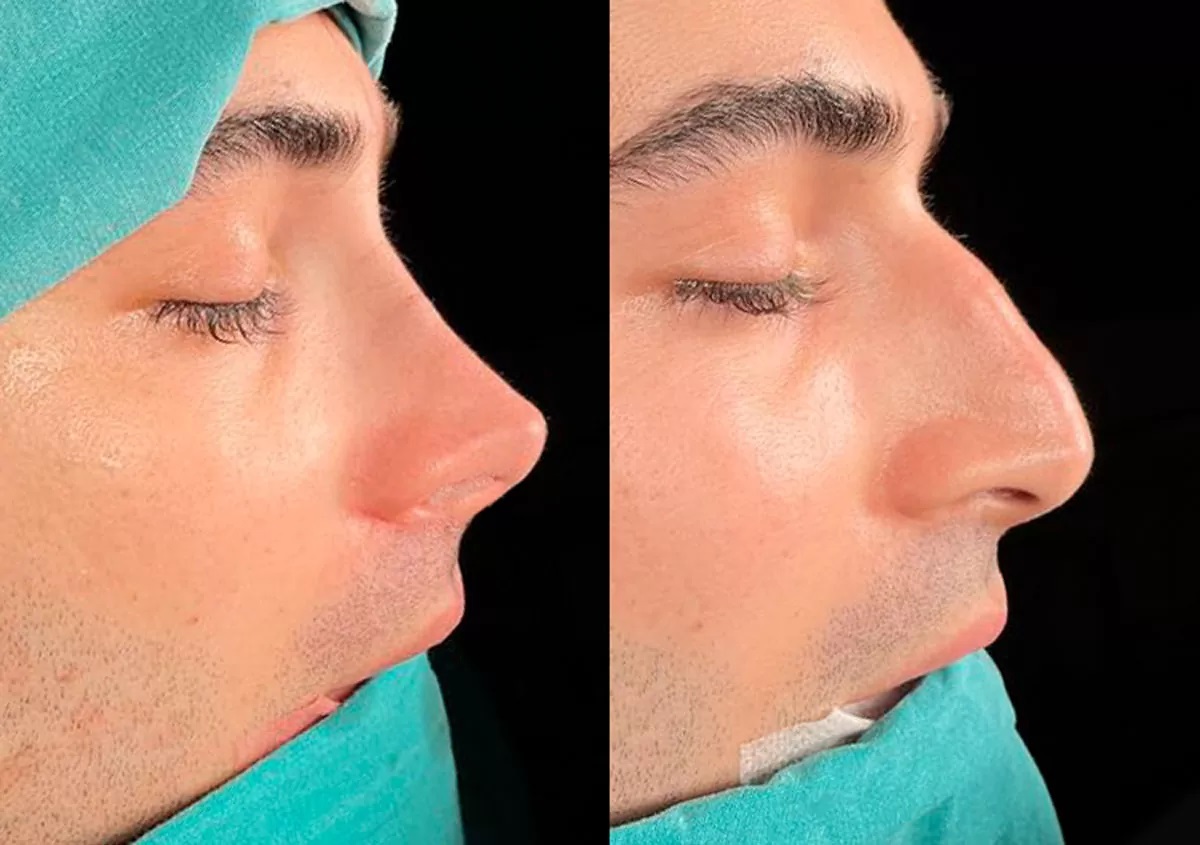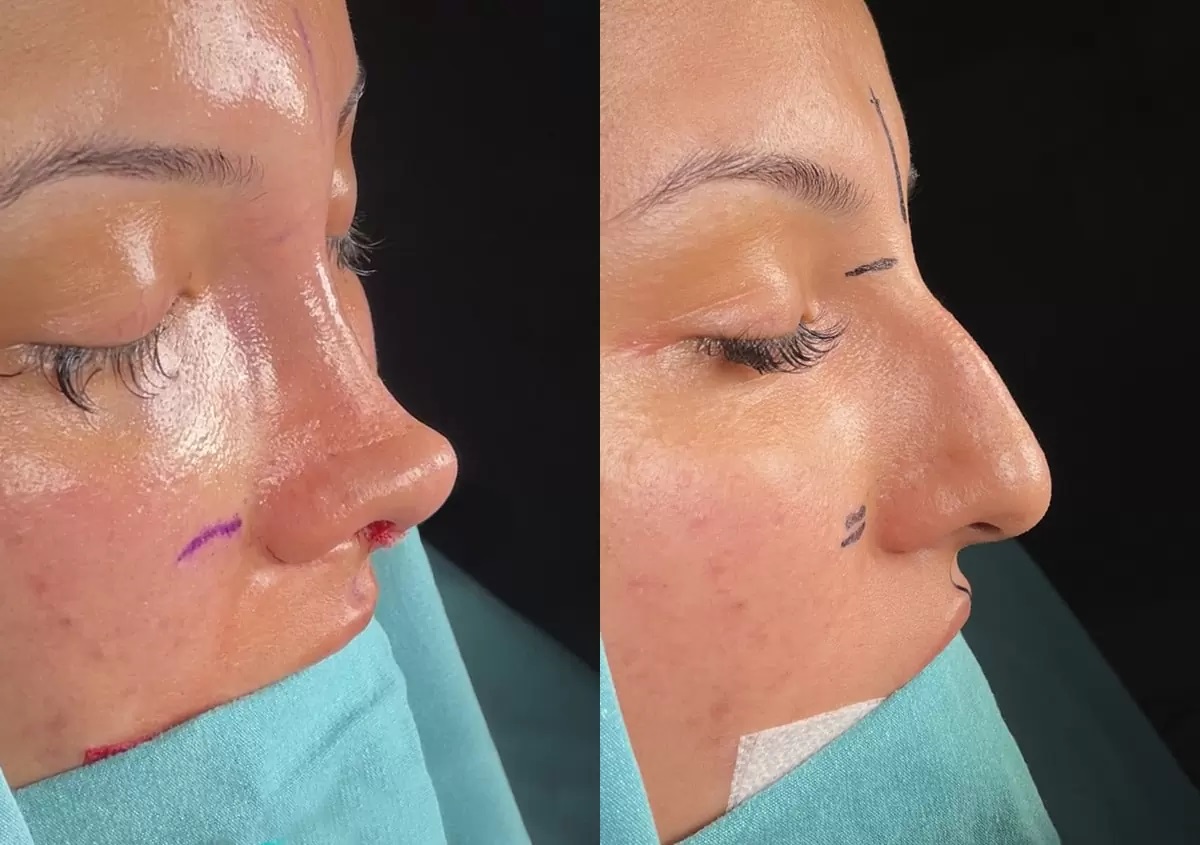
Revision Rhinoplasty Treatment
Revision rhinoplasty is one of the nasal aesthetic surgeries and is applied for patients who are not satisfied with the results of a previous rhinoplasty surgery. This procedure is performed to correct problems that occurred during the first operation, to correct functional problems, or to improve aesthetic results.
Revision rhinoplasty surgery is a more challenging procedure unlike the first rhinoplasty surgery. Because the nasal tissues may be weakened or damaged due to the changes made in the nasal structure after the previous surgery. In addition, the patient's nose structure may now be more complex. Therefore, this surgery is an operation that requires more experience and surgical skills.
Before revision nose surgery, a detailed evaluation is required to identify and correct the problems that occurred during the first surgery of the patient. The structure of the nose, the nostrils, the tip of the nose and the shape and size of the nasal dorsum, the concha and the septum are examined. As a result of this evaluation, it is decided which techniques to perform revision rhinoplasty surgery according to the individual situation of the patient.
How is Revision Rhinoplasty Performed?
Revision rhinoplasty is a rhinoplasty surgery performed for patients who are not satisfied with the results of a previous rhinoplasty surgery. The way this surgery is performed may vary depending on the patient's problems after the previous surgery and the structure of the nose. However, in general, the following steps are followed in revision rhinoplasty surgery;
Evaluation of the patient
The source of the patient's problems and complaints are determined. Then, the technique to be applied to solve these problems is decided.
Application of anesthesia
Before the surgery, general anesthesia is usually applied for the comfort of the patient. In this way, it is ensured that the patient does not feel pain during the operation and is completely asleep.
Making of cats
In revision nose surgery, incisions are made inside or outside the nose. These incisions are necessary to access changes to correct the shape of the nose.
Making changes
After the incisions are made, the necessary changes are made in the structure of the nose, depending on the results of the previous surgery. These changes can be made with different techniques such as correcting the ridge of the nose, shaping the tip of the nose or reducing the size of the nostrils.
Making the seams
After the changes are made, stitches are put in order to properly hold and heal the nasal tissues.
Placement of bandages
After the surgery, bandages are placed on the nose area to preserve the shape of the patient's nasal structure and speed up the healing process.
Revision nose surgery may be a more challenging operation than the first rhinoplasty surgery. Therefore, the surgeon who will perform this operation should have more experience.
Who is Eligible for Revision Rhinoplasty?
Revision rhinoplasty is a procedure that is applied to patients who have undergone rhinoplasty but are not satisfied with the result or the desired result has not been achieved. Therefore, any patient who has problems after their first rhinoplasty surgery may be suitable for revision rhinoplasty.
One of the most common causes of revision rhinoplasty is undesirable changes in the shape of the nose after the first operation. In addition, problems may occur in nasal functions and complaints such as breathing difficulties may occur after nasal surgery.
Revision rhinoplasty aims to remove unwanted changes in the shape of the nose and improve nasal functions after the first surgery. For this reason, revision rhinoplasty candidates should primarily be patients who have undergone rhinoplasty, but who experience undesirable results or who are not satisfied with their nasal functions.
Revision rhinoplasty can be applied to all patients over the age of 18. If the patient has very serious complaints about his nose and has health problems, this surgery can be performed until the age of 16.
Why is Revision Rhinoplasty Needed?
After rhinoplasty, some patients may observe unwanted changes in the shape or function of their noses. In this case, revision rhinoplasty surgery can be applied as a surgical procedure that provides improvement in cases where the patient is not satisfied with the result of the first operation.
One of the factors causing revision rhinoplasty is the changes in the shape of the nose after the first surgery. Errors made during the first surgery, results that are not in accordance with the patient's expectations, or complications in the postoperative period may cause undesirable changes in the shape of the nose.
In addition, nasal functions may be adversely affected after rhinoplasty. For example, complaints such as nasal congestion, runny nose, nosebleeds may be experienced. In these cases, revision rhinoplasty may be required.
Revision rhinoplasty is a procedure performed to correct the problems experienced after the first surgery. In this procedure, it is aimed to reshape the nose structure according to the previous surgery or to improve the functions of the nose.
However, revision rhinoplasty also brings some risks. In particular, factors such as damage to the tissues after the first surgery or permanent changes in the nasal structure due to infection may make revision surgery a more difficult procedure.
As a result, revision rhinoplasty surgery can be applied to remove unwanted changes in the shape of the nose after the first surgery or to improve nasal functions. However, since this procedure brings some risks, it is recommended that candidates first consult with a specialist and make a detailed evaluation.
When Should Revision Rhinoplasty Be Performed?
Revision rhinoplasty surgery is performed on people who are not satisfied with the shape and functions of their nose after the first operation. Revision nose surgery, which is necessary to correct the existing problems in the nose, should be performed at least 12 months after the first surgery.
Considerations After Revision Rhinoplasty
It is necessary to take some precautions before and after the revision rhinoplasty procedure.
Before revision rhinoplasty, it is recommended that patients first have a detailed discussion with their doctor. In this interview, information can be given about the postoperative expectations of the patient and the techniques to be used during the surgery. In addition, the general health status of the patients is evaluated and it is determined whether they are suitable for surgery.
Before surgery, patients are advised not to smoke and avoid alcohol consumption. In addition, the use of blood thinners is determined in consultation with the doctor before the operation.
After revision rhinoplasty, it is important for patients to follow the doctor's recommendations to speed up the healing process. In the first few days, patients may experience swelling and bruising on their faces. This is normal and will pass over time. In addition, painkillers recommended by the doctor can be used to reduce the pain in the nose area after the surgery.
After surgery, patients should protect their noses from impacts. For this reason, activities such as doing sports, lifting heavy or hitting the nose area should be avoided. In addition, it is important to clean the nose as recommended by the doctor and to change the dressings on the nose area regularly.
After revision rhinoplasty, the recovery process of patients may vary from person to person. However, the full recovery process can usually take several months. In this process, it is important for patients to go to follow-up examinations and rest properly by following the doctor's recommendations. After revision nose surgery, patients should pay attention to the nose area and protect this area.
Revision Nose Surgery Prices 2023
Revision rhinoplasty surgery prices; It may differ depending on the severity of the problems in the patient's nose structure, the quality of the hospital where the surgery will be performed, the experience of the doctor and the techniques to be applied. In addition, the city where the surgery will be performed is also effective in determining the prices.
Revision rhinoplasty surgery is usually a more difficult and risky procedure than the first rhinoplasty surgery. Therefore, the prices of the surgery are usually higher than the prices of the first surgery. The prices of revision rhinoplasty surgery may vary according to the services and facilities offered by the hospital where the surgery will be performed. The prices of surgeries performed in private hospitals may be higher than in public hospitals.
Frequently Asked Questions About Revision Rhinoplasty
The nasal bone is usually fully developed after the age of 16 and rhinoplasty can be performed. However, the full development and completion of the nasal bone may take up to 18 years. For this reason, surgery is usually performed after the age of 18.
Prices of rhinoplasty operations; It varies according to the hospital where the operation will be performed, the needs of the patient, the equipment and experience of the doctor.
It is an operation performed to eliminate the structural and physical problems that occur after the first nose surgery.
Revision rhinoplasty is a complex and difficult surgery. It should be performed by a specialist and experienced surgeon.
Bruises and swelling may occur after revision nose surgery. Swelling and bruises disappear 3-4 days after the operation. People can return to work and school life 10 days after the operation.
After rhinoplasty, at least 9 months must pass after the first operation before revision can be made. However, the recommended 12 months.
Revision nose surgery, which is a more complex operation compared to renoplasty, does not have any risks.




